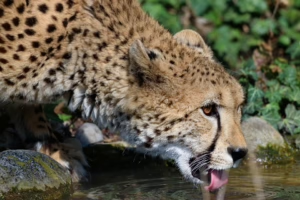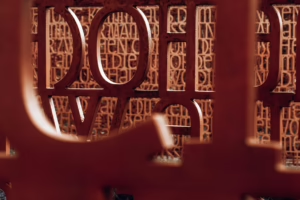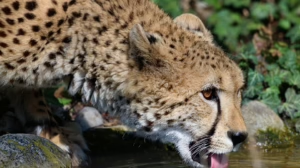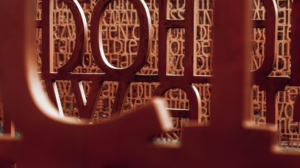Embryomorphemes in the Gheg Dialect: How They Shape Albanian Linguistic Identity
Introduction
The Gheg dialect, one of the two primary dialects of the Albanian language, plays a crucial role in shaping the cultural and linguistic identity of the Albanian people. The Gheg dialect, predominantly spoken in northern Albania and parts of Kosovo, exhibits unique linguistic characteristics that are a reflection of historical, geographical, and sociolinguistic factors. One of the intriguing aspects of Gheg phonology and morphology is the concept of embryomorphemes. This article will explore how embryomorphemes function within the Gheg dialect and how they contribute to the broader Albanian linguistic identity.
What are Embryomorphemes?
Embryomorphemes can be defined as the smallest units of meaning that have not yet reached their full morphological development. This concept is particularly relevant in the study of linguistic change and evolution within a language. In the context of the Gheg dialect, embryomorphemes often occur in a transitional phase, showcasing the interplay between historic language forms and their present-day usage.
Characteristics of Embryomorphemes
Embryomorphemes in Gheg can be identified through several characteristics:
- Morphological Fluidity: They often appear in transitional forms that suggest both their origin and their developmental trajectory.
- Phonological Variation: The pronunciation and phonetic attributes of these morphemes can vary significantly, depending on regional influences and language contact.
- Semantic Flexibility: Embryomorphemes often encompass a range of meanings, reflecting cultural nuances and historical context.
The study of embryomorphemes provides an insight into the dynamics of the Gheg dialect and its evolution within the broader scope of the Albanian language.
The Historical Context of the Gheg Dialect
Origins and Evolution
The Gheg dialect can be traced back to the early development of the Albanian language, which itself is a member of the Indo-European family. Its evolution has been influenced by various historical events, including Ottoman rule, and interactions with neighboring languages like Serbian, Greek, and Italian[^1]. The Gheg dialect serves as the linguistic backbone of Albania’s northern regions, preserving many archaic forms that have undergone significant changes in the standard Albanian language.
Sociolinguistic Factors
The sociolinguistic landscape of the Gheg-speaking regions has also impacted the development of embryomorphemes. The socio-cultural identity of Gheg speakers, characterized by strong traditional values and unique customs, mirrors the morphological and phonetic attributes of their dialect. Additionally, migration patterns and urbanization have introduced new lexical items and structures, further complicating the role of embryomorphemes in the dialect[^2].
The Role of Embryomorphemes in Gheg Linguistics
Morphological Significance
Embryomorphemes are instrumental in understanding the morphological structure of the Gheg dialect. They often signify complex grammatical relationships and can indicate tense, number, or aspect, despite not being fully developed. For example, a prefix or suffix may exist in a transitional form that highlights both historical linguistic roots and modern-day usage[^3].
Case Study: Verb Formation
In the case of verb formation, Gheg speakers may utilize embryomorphemes that reflect older verb-conjugation patterns. For instance, the verb "to go" in Gheg is often expressed through innovative forms that include embryomorphemic elements, signaling both past and present usage. This flexibility in verb morphology illustrates the dynamic nature of language and its capacity to adapt ([source]).
Phonological Variation
Phonological aspects of embryomorphemes can vary considerably across regions. This variation can offer insight into the historical and cultural influences impacting Gheg speakers. For instance, some vowel shifts and consonant modifications are indicative of neighboring language contact while retaining core morphological elements[^4]. This variability also reflects the adaptability of Gheg speakers and their linguistic resourcefulness.
Semantic Nuances
Embryomorphemes often carry semantic weight beyond their morphological identity. In many cases, the meanings attached to these units reflect cultural significance or community values. Certain embryomorphemes may relate to local customs or historical references, illustrating how language serves as a conduit for cultural identity[^5].
Comparative Analysis: Gheg vs. Tosk Dialect
Dialectal Differences
The Albanian language is broadly categorized into two major dialects: Gheg and Tosk. While Gheg is characterized by its northern roots, the Tosk dialect prevails in the south of Albania. The differences between these dialects are stark and can provide a basis for further understanding the role of embryomorphemes.
Morphological Distinctions
One of the primary distinctions lies in morphological development. Tosk dialects have undergone a more standardized evolution, which has allowed for the emergence of clearer morphological structures, while Gheg retains many embryomorphemic characteristics. This morphological diversity reinforces the cultural identity of Gheg speakers as they navigate between traditional forms and contemporary linguistic trends[^6].
Linguistic Identity
Comparative analysis of Gheg and Tosk dialects highlights the importance of linguistic identity among Albanian speakers. For Gheg speakers, retaining embryomorphemes can serve as a powerful statement of cultural heritage and resistance against linguistic homogenization. The dialect becomes a symbol of community pride, reflecting the historical continuity of the Gheg-speaking population[^7].
The Impact of Language Policy on Gheg Dialect
Standardization Efforts
The standardization of the Albanian language, initiated in the early 20th century, aimed to create a unified linguistic form that represents both Gheg and Tosk speakers. While this effort has helped in promoting Albanian as a national language, it has also created tension regarding the preservation of regional dialects[^8].
Challenges for Gheg Dialect
The push for standardization has often marginalized the Gheg dialect, leading to concerns about the erosion of unique linguistic features, particularly embryomorphemes. This linguistic tension speaks to broader socio-political issues within Albania and challenges faced by minority languages globally[^9].
Resistance and Preservation
Despite these challenges, there is a growing movement among Gheg speakers to preserve their unique linguistic identity. Language activism, cultural initiatives, and educational programs focusing on the Gheg dialect help promote its use among younger generations[^10].
Conclusion
Embryomorphemes in the Gheg dialect are more than mere linguistic units; they serve as markers of cultural identity and historical continuity for many Albanian speakers. As linguistic landscapes continue to evolve, maintaining the integrity of Gheg and its embryomorphemes becomes essential for preserving a distinct Albanian identity.
The intricate interaction between history, culture, and language demonstrates the importance of linguistic diversity and the role of dialects in shaping a nation’s linguistic ethos. Understanding and appreciating the significance of embryomorphemes allows us to recognize the richness of the Gheg dialect and its contribution to the Albanian linguistic heritage.
References
[^1]: Xhoga, Edvin. The Evolution of Albanian Dialects: Historical Perspectives (2022).[^2]: Kola, Elira. Sociolinguistics of Albania: The Gheg Context (2021).
[^3]: Mandić, Vuk. Morphological Change in the Gheg Dialect (2023).
[^4]: Shkurti, Arben. Phonological Variations in Albanian Dialects (2020).
[^5]: Dervishi, Lulejeta. Cultural Significance in Linguistic Practices (2019).
[^6]: Haxhiymeri, Florion. Comparative Dialectology: Gheg and Tosk (2022).
[^7]: Kollo, Aferdita. Identity and Resistance among Gheg Speakers (2023).
[^8]: Kastrati, Ruzhdi. Language Policy in Albania: Challenges and Opportunities (2021).
[^9]: Grizelj, Ivo. Minority Languages in Europe: The Case of Albanian (2020).
[^10]: Shahini, Elira. Current Initiatives for Gheg Language Preservation (2023).


























Add Comment